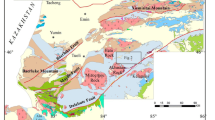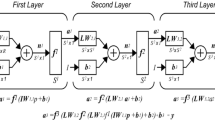Abstract
Landmines are a major problem facing the world today; there are millions of these deadly weapons still buried in various countries around the world. Humanitarian organizations dedicate an immeasurable amount of time, effort, and money to find and remove as many of these mines as possible. Unfortunately, landmines can be made out of common materials which make the correct detection of them very difficult. This paper analyzes the effectiveness of combining certain statistical techniques with a neural network to improve detection. The detection method must not only detect the majority of landmines in the ground, it must also filter out as many of the false alarms as possible. This is the true challenge to developing landmine detection algorithms. Our approach combines a Back-Propagation Neural Network (BPNN) with statistical techniques and compares the performance of mine detection against the performance of the energy detector and the δ-technique. Our results show that the combination of the δ-technique and the S-statistics with a neural network improves the performance.
Similar content being viewed by others
References
Tonomura, M. and Nakayama, K.: A hybrid learning algorithm for multilayer perceptrons to improve generalization under spares training data conditions, In: Proceedings of the Int. Joint Conf. on Neural Networks, July 15–19, Vol. 2, pp. 967–972, 2001.
Li, S.: Comparative analysis of backpropagation and extended kalman filter in pattern and batch forms for training neural networks, In: Proceedings of the Int. Joint Conf. on Neural Networks, July 15–19, Vol. 1, pp. 144–149, 2001.
M.R.G. Meireles P.E.M. Almeida M.G. Simoes (2003) ArticleTitleA comprehensive review for industrial applicability of artificial neural networks IEEE Trans. Industrial Electronics 50 IssueID3 585–601 Occurrence Handle10.1109/TIE.2003.812470
George V., Altshuler, T. et al.: Background data collection plan, DARPA Defense Science Office, 1996.
Geonics Limited. EM61. http://www.geonics.com/em61.html. Accessed: September 2004.
E. Gelenbe T. Kocak (2000) ArticleTitleArea based results for mine detection IEEE Trans. Geosci. Remote Sensing 38 IssueID1 12–24 Occurrence Handle10.1109/36.823897
Kocak, T.: Applications of the random neural network to some inverse problems in image processing. Ph.D. Dissertation, Duke University, May 2001.
Rumelhart D. E., McClelland J. L. and PDP Res. Group.: Parallel Distributed Processing, Vols. 1 and 2, MIT Press, Cambridge, MA, 1986.
L. Collins P. Gao L. Carin (1999) ArticleTitleAn improved Bayesian decision theoretic approach for land mine detection IEEE Trans. Geosci. Remote Sensing 37 IssueID2 811–819 Occurrence Handle10.1109/36.752197
P. Gao L. Collins (2000) ArticleTitleA theoretical performance analysis and simulation of time-domain EMI sensor data for land mine detection IEEE Trans. Geosci. Remote Sensing 38 IssueID4 2042–2055
Author information
Authors and Affiliations
Corresponding author
Rights and permissions
About this article
Cite this article
Kocak, T., Draper, M. A Back-propagation Neural Network Landmine Detector Using the Delta-technique and S-statistic. Neural Process Lett 23, 47–54 (2006). https://doi.org/10.1007/s11063-005-3032-x
Issue Date:
DOI: https://doi.org/10.1007/s11063-005-3032-x




